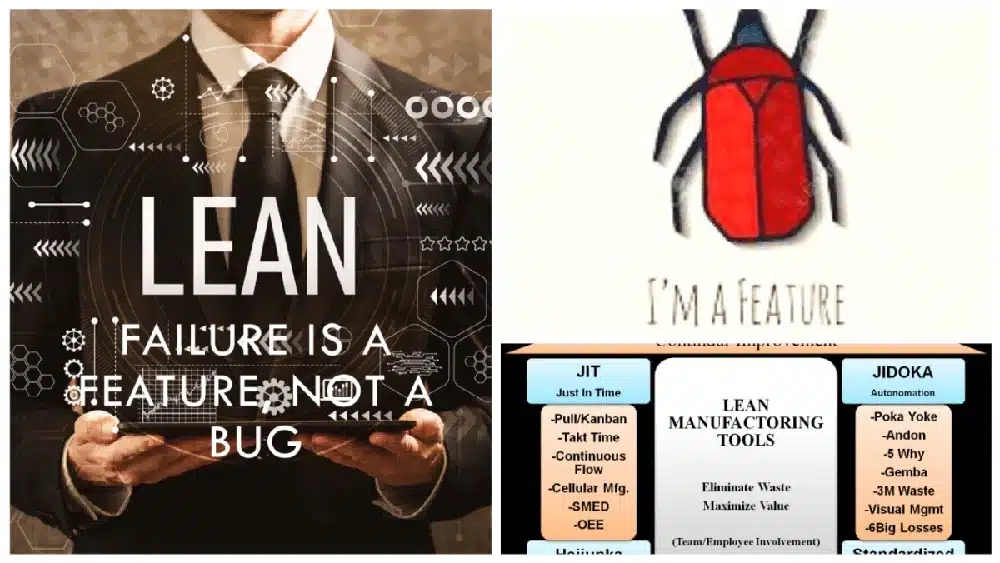There is much discussion about the failure rates of Lean transformations and the reasons why this might be. However, I want to propose that we look at it from a different perspective, one that doesn’t consider this failure as a ‘bug’ in the system, but instead as a feature of Lean.
To explain, the discussions regarding the failure of Lean make a presumption that Lean, as described and taught since the ‘Machine that change the World’ was first published in 1990, is designed to be successful and that the root cause of any failure must be due to its poor application and implementation: User error.

However, what if the problem is actually that Lean has been taught, in the majority of publications, trainings and deployments, as a tool-based methodology for efficiency improvement and cost reduction? What if it’s the design of the approach that’s wrong, not the use?
In the many years that I have been involved in leading Lean Transformations, across three global companies, one of the first things that we’ve had to do, and sustain, is the re-education of the organisation about what Lean really means. In many ways, it’s actually easier with those colleagues untainted by earlier ‘Lean initiatives’ or experiences, as they don’t already have a biased view of what will be expected of them from the Lean Operating Model.
The stark facts are that the vast majority of Lean deployments, teaching and coaching are focussed on the tools, on implementing a set of activities based upon a ‘House of Lean‘, where trainings are provided and ‘Kaizen Events’ are undertaken to implement the new tools. Often there is some form of ‘check-box’ audit to ensure that all of the key components of what is considered to be an effective Lean System are in place, and the site / plant / location will be awarded a rating based upon having met the said criteria.

The metaphor that I sometimes use is that of Lionel Messi. If someone aspired to learn to play football (soccer) as Messi does, and took the approach that the majority of companies do, they would purchase the same kit as him, learn and copy which food he ate for his breakfast, lunch and dinner, and perhaps emulate some of his training routines. However, what they would likely miss is the mindset and beliefs of Messi, and the environmental, social and interpersonal interactions that shaped his development into one of the world’s best football players. A fundamental element that they might well overlook is whether they have the right talent for the role of world class footballer, as all of the training, diet and clothing in the world will not compensate for a lack of talent.
This metaphor is intended to highlight that, having Hoshin Kanri, Daily Management and 5S in place, doing Kaizen, implementing Leader Standard Work, etc, will not compensate for the failure to understand and develop the thinking that underpins the success of the Toyota Production System (TPS) & Organisations that are world-class in the practice of Lean Leadership.
A great example of this is Andon, which I’ve seen implemented in many organisations, some with quite sophisticated electronic systems, which not only illuminate a lamp at the operational station, but also digitally summon the support staff. However, very rarely do I see the response that you would experience in a Toyota plant, the immediate and purposeful focus on understanding the reason for the Team Member’s (or machine’s) Andon call, and rapid problem solving to understand the root cause and implement the countermeasure.
On the contrary, what I often, unfortunately, observe is very little in way of responsiveness. It’s not uncommon to see Andon lights illuminated to the point of permanency, and a laissez-faire attitude to their existence. Essentially, the tool has been implemented, but the thinking behind the tool has not been adopted.
As I wrote in a previous newsletter; Your operating model is perfectly designed to get the results that you’re getting: So change it!:
Without a fundamental change in the operating model, and the environment within which people work, no fundamental change can be made to how the organisation operates, and the results that it achieves.
I think that the whole idea of Lean is fraught with ambiguity, which means that it’s very hard to judge what is the right and wrong approach. However, what I do know is that Lean, as it is currently taught (and sold) to the vast majority of organisations, has a high failure rate due to its design, not a fault in its application: The failure of Lean is a feature, not a bug.
Interested to learn more about Leading with Lean? Then click on one of the links below:
The Leading with Lean Academy Brochure.
Subscribe to the Newsletter: Subscribe
- Leading Lean by Living Lean: Changing how you lead, not who you are
- The Simplicity of Lean: Defeating Complexity, Delivering Excellence
- Leading with Lean: An experience-based guide to Leading a Lean Transformation
Visit my Website at: LeadingwithLean and my other LinkedIn posts may be found at this link.




